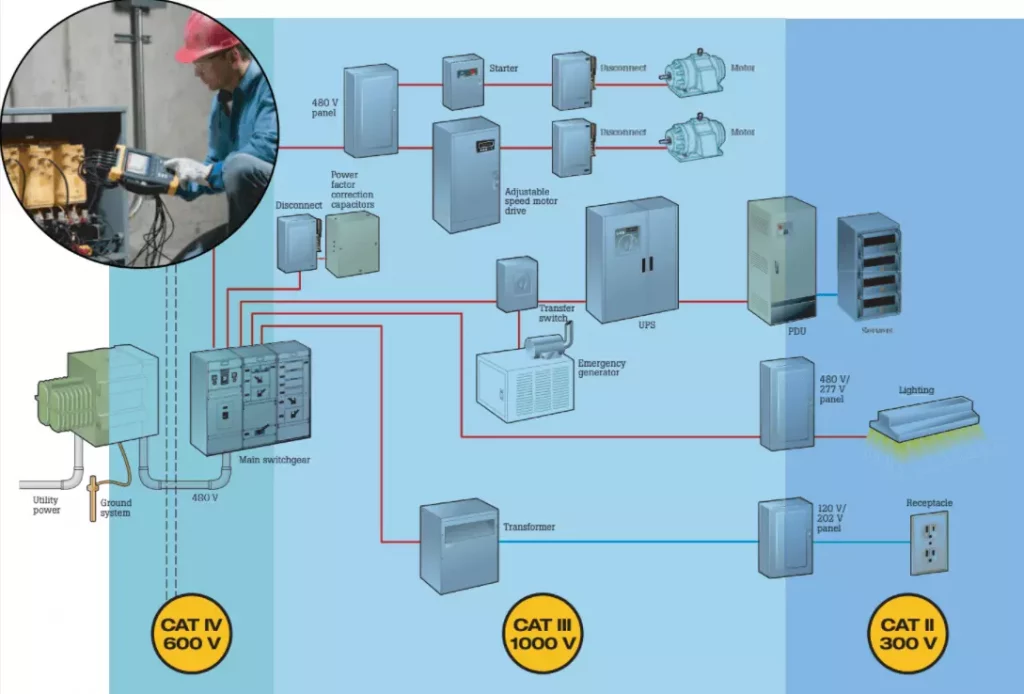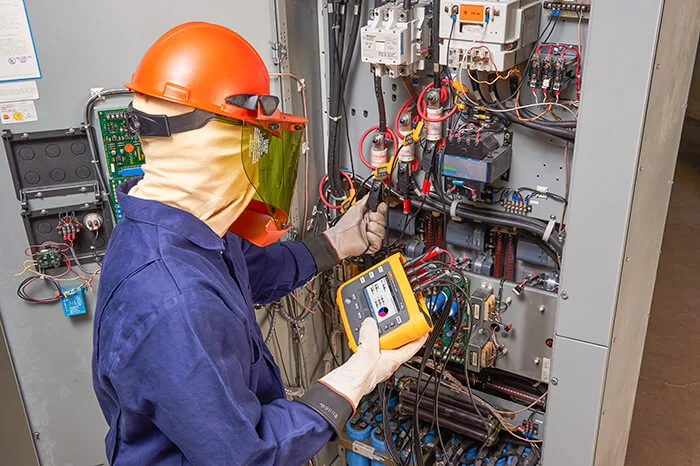Productivity is the key to surviving in today’s tough corporate environment. Backed by smart technology, every company can now leverage automation to streamline long and complex production processes – or fall further behind their competitors.
We rely on automation tools and clean power to keep our business running smoothly. Without it, we could very well be affected by power problems which can cause processes and equipment to malfunction or shut down the system completely resulting in excess energy costs as well as a complete work stoppage! It’s simply too dangerous not to focus on having a strong team of professional electricians at all times.
The interdependence of other systems adds layers of complexity to this issue.
Your computer is fine but unfortunately, the network is down. Therefore, nobody can book a flight or file an expense report.
Table of Contents:-
The process is operating correctly but unfortunately, the HVAC has shut down and production must stop.
Mission-critical systems exist throughout the facility and throughout the enterprise; any one of these vital elements could be brought to a grinding halt at any time. And that will usually be the worst possible time!
Most power quality problems originate inside the facility. They may be due to problems with:-
- Installation — improper grounding, improper routing, or undersized distribution.
- Operation — equipment operated outside of design parameters.
- Mitigation — improper shielding or lack of power factor correction.
- Maintenance — deteriorated cable insulation or grounding connections.
Even the finest designed machinery in a well-maintained facility can experience power quality problems as the machinery ages. This is particularly true of older equipment. Power quality issues can also originate from outside of your facility, caused by factors such as unpredictable blackouts or brownouts. There’s a cost here. How do you quantify it?
Measuring power quality costs:-
Power quality problems make their effects felt in three general areas:-
- Downtime
- Equipment problems
- Energy costs.
1. Downtime:-
To quantify system downtime costs, you need to know two things:-
- The revenue per hour your system produces.
- The cost of production.
Downtime has other costs associated with it:-
- Scrap. How much raw material or work in the process do you have to throw away if a process goes down?
- Restart. How much does it cost to clean up and restart after an unplanned shutdown?
- Additional labor. Do you need to pay overtime or outsource work to respond to a downtime incident?
Also, consider the business process. Is it a continuous, fully utilized process (e.g., a refinery)? Must your product be consumed when produced (e.g., a power plant)? Can customers instantly switch to an alternative if the product is not available (e.g., a credit card)? If the answer to any of these questions is yes, then lost revenue is difficult or impossible to recover.
Are you an OEM producer? If you can’t make timely deliveries, your customer may switch to a source that can.
2. Equipment Problems:-
Getting accurate estimates for how much a project will cost is not easy. You’re dealing with many variables that can make an estimation very difficult to come by.
Did the motor fail because of harmonics or was it caused by something else entirely?
Is machine Line Three malfunctioning because of a variation in power supply levels or are there other factors at play?
To get the correct answers, you need to do two things:-
- Troubleshoot to the root cause.
- Determine the actual costs.
3. Energy Costs:-
To reduce your power bill, you need to record consumption patterns and adjust the system and load timing to reduce one or more of the following.
- Actual power (kWh) usage.
- Power factor penalties.
- A peak demand charge structure.
You can reduce power usage by eliminating inefficiencies in your distribution system.
Inefficiency sources include:-
- High neutral currents due to unbalanced loads and triplen harmonics.
- Heavily loaded transformers, especially those serving non-linear loads.
- Old motors, old drives, and other motor-related issues.
- Highly distorted power, which may cause excessive heating in the power system.
To avoid power factor penalties you must correct for power factor. Generally, this involves installing correction capacitors. But, first correct for distortion on the system — capacitors should have some resistance to harmonics and because they present a low impedance it is important not to overcorrect their power factor causing incorrect resonance or burning out capacitor banks. Consulting a power quality engineer will help you determine if correcting for harmonics factored into your plans alongside other electrical items of close proximity including motors which may affect the overall power factor of a given system.
You can reduce peak demand charges by managing peak loading. Unfortunately, many people overlook a major component of this cost — the effect of poor power quality on peak power usage — and thus underestimate their overpayments. To determine the real costs of peak-loading, you need to know three things:-
- “Normal” power usage.
- “Clean power” power usage.
- Peak-loading charge structure.
Let’s take an example. In your office or factory, the average consumption is 570 kWh. But most days’ consumption spikes to 710 kWh. The utility charges you for each 10kWh over 600 kWh for the whole month and any time you exceed 600 kWh during a 15-minute peak measurement window. If you correct power factor, mitigate harmonics, correct for sags, install a load management system, you see a different power usage picture — one that can be calculated.
By eliminating the power quality problems, you reduce the size of the peak demands and the base from which they start. By using load management, you control when specific equipment operates and thus how your loads “stack on top of each other.” The result is that now instead of your building averaging 515 kWh and your peak-load dropping to 650 kWh – because you used load management to move some loads around -your new peak-load rarely goes beyond 595 kWh.

Saving Power Quality Cost:-
You’ve tallied up the costs of poor power quality. Now, you need to know how to eliminate power quality costs. The following steps will get you there.
- Examine design. Determine how your system can best support your processes and what infrastructure you need to prevent failure. Verify circuit capacity before installing new equipment. Re-check critical equipment after configuration changes.
- Comply with standards. For example, examine your grounding system for compliance with IEEE-142. Examine your power distribution system for compliance with IEEE-141.
- Examine power protection. This includes lightning protection, TVSS, and surge suppression. Are these properly specified and installed?
- Get baseline test data on all loads. This is the key to predictive maintenance, and it allows you to spot emerging problems.
- Question mitigation. Mitigating power quality problems includes correction (e.g., grounding repair) and coping (e.g., K-rated transformers). Consider power conditioning and backup power.
- Review maintenance practices. Are you testing, then following up with corrective actions? Conduct periodic surveys at critical points — for example, check neutral to ground voltage and ground current on feeders and critical branch circuits. Conduct infrared surveys of distribution equipment. Determine root causes of failures, so you know how to prevent recurrences.
- Use monitoring. Can you see voltage distortions before they overheat motors? Can you track transients? If you don’t have power monitoring installed, you probably won’t see a problem coming — but you will see the downtime it causes.
Summary:-
At this point, you need to determine the costs of prevention and remediation so that you can compare those to the costs of poor power quality. This comparison will allow you to justify the investment needed to fix the power quality problems that are impacting your daily productivity. It is a good idea to measure and monitor power quality as an ongoing effort because of how important it is for your business’s overall success and success in your day-to-day functions! Today, it’s remarkably affordable and it will always cost less than downtime or productivity loss!
We here at Sapphire Technologies are experts in industrial instrumentation and safety products. We have the expertise when it comes to using and implementing power quality analyzers. The Fluke power quality analyzer has today become a standard due to its focus on safety and reliability for its users. We are also an authorized Fluke distributor in Bangalore, Karnataka (India). So if you are interested to know more about these products, contact us to see which ones would be ideal for you. Contact us at [email protected]
